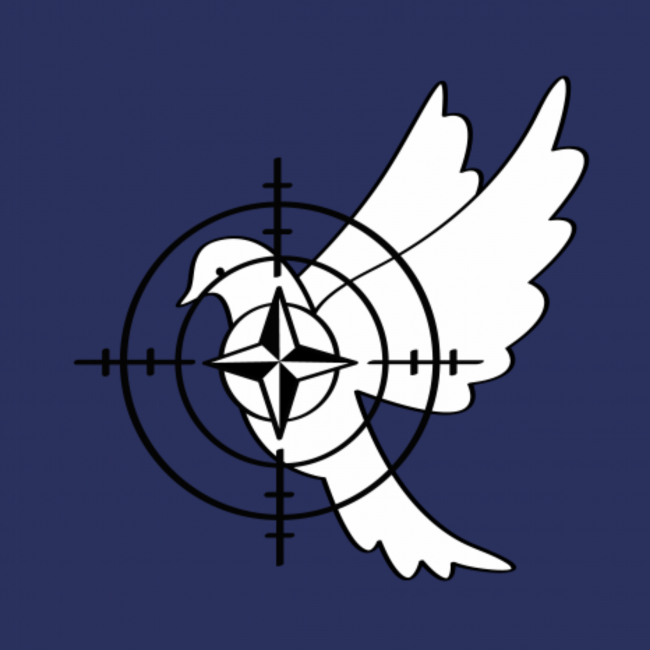In this contribution I try to give a brief overview of how NATO is responsible for soaring military spending.
Two years ago, NATO secretary-general Jens Stoltenberg declared that “arms control is in NATO's DNA.”
Looking back into the last two decades, there is little to notice of that DNA. The facts tell us that NATO is a driving force of a new arms race.
In the final years of the Cold War, numerous agreements were concluded with the Soviet Union that stopped the dangerous arms race. This was necessary because in 1986 a record number of around 80,000 nuclear warheads have been deployed worldwide. Since 1987, world military spending started to decline, reaching its lowest level in 1997 worth 740 billion $, or half of what was spent 10 years before. The deepest cuts over the 10-year period were made by Russia and its successor states. Their combined military expenditure in 1997 was around one-tenth of that of the USSR in 1988.
But from then on, that downward trend came to an end. The United States and NATO waged several wars starting with a naval and air campaign in Bosnia in the 90s followed by the wars for Kosovo, Afghanistan, Iraq and Libya. NATO’s war policy boosted military budgets. The combined arms sales of the world’s 100 largest arms-producing and military services companies (the SIPRI Top 100) were $531 billion in 2020 compared to $300 billion in 2001), 66% from NATO-countries.
In parallel, the arms control regime began to fall apart. President George Bush announced the withdrawal from the ABM Treaty in 2002, which it has never respected. Ronald Reagan already announced in the 1980s that the US was working on a Strategic Defence initiative, a missile defence system nicknamed ‘Star Wars’-program. Since 2010 NATO is building an expensive Ballistic Missile Defense system in Europe. This has prompted Russia to adjust its nuclear capabilities to avoid nuclear imbalances.
After pressure from the US, NATO declared at the Bucharest summit in 2008 that Ukraine and Georgia could become NATO-member. This created tensions with Russia that has been promised before the German reunification that NATO wouldn’t expand into former Warsaw pact countries. For Russia this is and was a Red Line. The coup in Kiev and Russia's annexation of Crimea were used by NATO to agree at the Wales Summit (2014) that NATO member states should spend 2% of GDP on their military apparatus. 20% of their military expenditure must henceforth go towards the purchase of war equipment. Since then, NATO's military budget has risen from $896 billion to 1,049 billion in the middle of last year, an increase of 15%. NATO accounts today for more than half of global military spending and it’s likely that it will increase its share in the coming years. Russian military expenditure is only 6% of what NATO-countries spend, only slightly higher than that of Germany or the United Kingdom. We now see that the confrontational politics surrounding Ukraine are pushing NATO's military budgets even more. Belgium, my country, decided yesterday to increase military expenditure by EUR 14 billion over the next 8 years, of which EUR 10 billion for weapons.
NATO’s war industry is also dominating the world market. According to SIPRI, three NATO member states, the US, France and Germany increased their arms market shares in the world to more than 50%. NATO member states represent two thirds of the global arms trade vis-à-vis Russia (20%) and China (5%).
Growing international tensions are also driving new investments in nuclear weapons arsenals. According to ICAN, the nuclear powers invested $72.9 billion in the maintenance and upgrade of their nuclear weapons. Half of that is accounted for by the US and with France and the United Kingdom included, 67% of nuclear weapons investments is on behalf of NATO-countries.
Last but not least, under president Trump the US continued to phase out the arms control system. In May 2018, he withdrew the US from the Iran nuclear deal and later that year cancelled the INF Treaty that banned US and Russia’s short, medium and intermediate range missiles. In 2020, the US also announced its withdrawal from the open skies treaty.
To conclude: the last two decades NATO developed into an aggressive global military player. It has expanded its territory into Eastern Europe, transformed itself into a military intervention machine and concluded cooperation agreements with some 40 countries and regions to advance the geopolitical interests of the US and its satellites states. In recent years, NATO has stepped up its confrontation with Russia and China, calling those countries ‘systemic rivals’. The war industry makes huge profits at the expense of common and human security. The military industrial complex turns out to be the big winner, with NATO as the driving force of global militarization.
Contribution to the Peace Summit 2022 preparatory webinar on January 29, 2022


